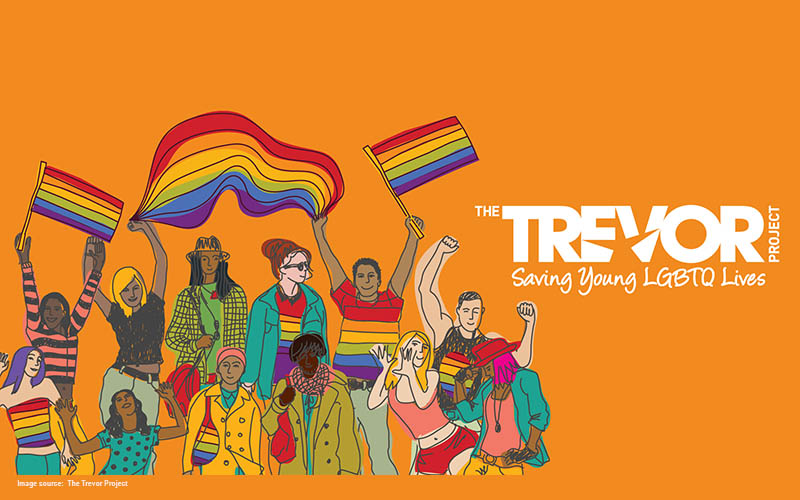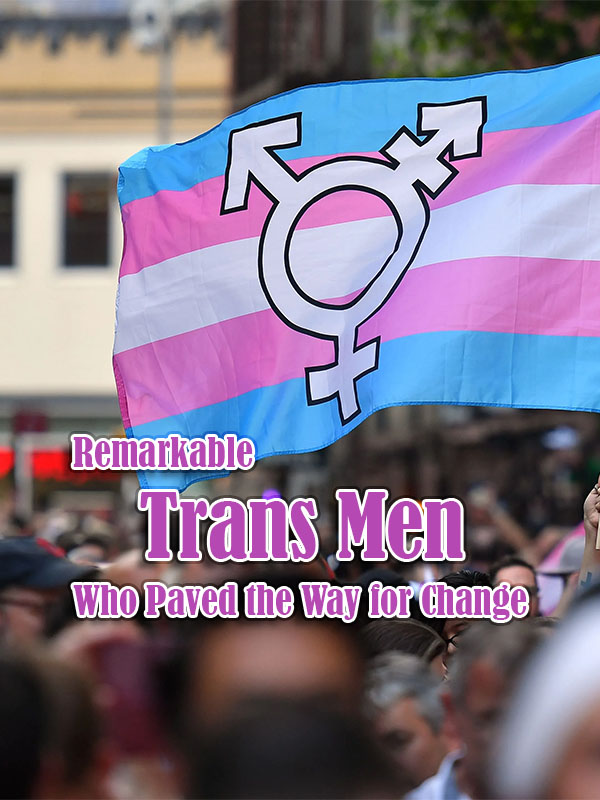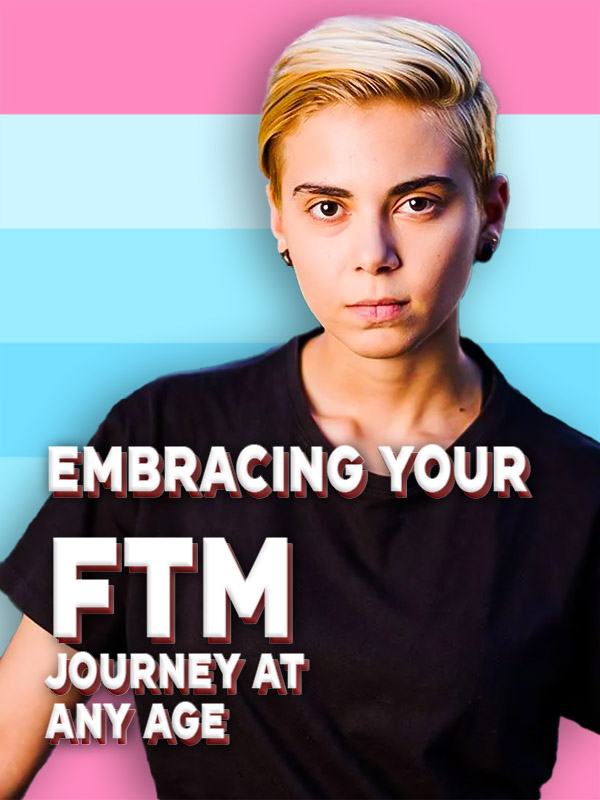What is the Difference Between a Transgender Man and a Transgender Woman?

The terms gender identity and sex are often used interchangeably, creating a host of confusion. One of those confusion is ‘who is a Trans man and Trans woman’. Hence, the need to learn about gender identities.
A transgender man is someone who was assigned female at birth, but identifies and lives as a man. On the other hand, a transgender woman was assigned male at birth, but she identifies and lives as a woman. So, the key difference is their gender identity, which differs from the gender they were assigned at birth.
Both may undergo social, legal, and medical transitions to align their physical appearance with their true gender. However, despite these efforts, they still face harmful stereotypes and challenges as they navigate the complexities of social, legal, and cultural acceptance.
In this article, you will find the fundamental differences between sex and gender identity. And in doing so, you will get to know who a Trans man and a Trans woman are.
Understanding Transgender People
1. What Is Transgender Man?
A transgender man lives like a man today. However, he was born with a female-assigned sex.
You will notice some of the following attributes to identify Transgender men.

a) Masculine clothing
Since you are a Transgender man, you have an inner knowing of who you are. Therefore, you will have a prominent male presentation and style. You may love to wear pants and shirts, including but not limited to any style that makes you stand out as a man.
b) Him/He pronouns
A transgender man will likely use the ‘Him’ and ‘he’ pronouns. He presents as a masculine style and presentation.
2. What Is a Transgender Woman?
A transgender woman lives as a woman in day-to-day interaction. However, she was assigned male at birth.

In any case, a Transgender woman uses the pronouns she/her. She also dresses in a feminine way.
What’s the Difference Between the Two
Understanding the following differences will help you know what it means to be a trans man or woman.
1. Gender Identity
Everyone, whether transgender or not, has a gender identity. Most people never take the time to understand gender identity because it aligns with their sex. Gender identity refers to your internal knowledge regarding whether you are a man, woman, or a different gender.
It is worth noting that trans people identify with a gender that is starkly different from their assigned sex. Gender identity helps with authenticity and self- expression.
2. Biological Sex
Biological sex refers to the physical differences between male, female, or intersex people. A person will have sex-assigned markers at birth. These include physiological and physical characteristics.

These include the nature of the genitals and the chromosomal component. The assigned sex you are given at birth is the ‘natal sex.’
a) Chromosomes
If assigned female at birth, you have two copies of the X chromosomes (XX). You will have X and Y chromosomes (XY) if you are assigned male at birth. While these chromosomal markers help assign biological sex, over time, you will see children born with two or three X chromosomes. Same is the case with some female babies are born with a Y chromosome, making maleness and femaleness biological binary.
b) Anatomy
These are the differences in the body components of individuals. For instance, biological markers of sex show that female-assigned people have higher estrogen than progesterone. Males, on the other hand, have elevated progesterone levels.

Other times, anatomical differences between male and female genitalia also make biological sex. Typical society sees a baby born with a penis as a male. A baby with a female genitalia such as a vagina as a female. Some, however, are born with ‘genitalia differences’ referred to as ‘intersex.’
c) Societal perceptions
Societal norms see that sex lies only between male and female categories. However, sex as a spectrum is slowly coming to light as public consciousness.
Other times, when someone identifies with the gender they are assigned at birth, they are ‘cis-gender.’ Over time, you will notice that some people may not conform to the ‘cis’ dynamic of being a man or a woman. Instead, such people may identify as non-binary or genderfluid. This is indicative that gender is also a spectrum.
3. The Transitioning Process
The transition process it takes to navigate life as a Trans man or a Trans woman entails;
a) Social
Social transition entails how a trans man or woman expresses oneself to others. For instance, you may change your name, use different pronouns.

You may also change your hairstyle or grooming habits,You will adopt new ways of communication. Others include experimenting with different gender presentations. You are communicating with others about being trans.
b) Medical
Medical transition entails the use of hormone therapy to transition. Trans men will use testosterone hormone. Trans women will take estrogen and testosterone blockers.
Some of the effects of hormone therapy include emotional and physical changes. For instance, Trans men will experience;
● Enlarged clitoris
● Increased facial and body hair
● Increased body mass and muscles
● Increased sexual libido.
● Emotional changes such as joy and gender dysphoria are mitigated.

Transwomen will experience the following changes after feminizing hormone therapy.
● Reduction of body muscle or mass.
● Reduction of body hair.
● Sweat and odor patterns.
● Improved psychological and emotional well-being as gender dysphoria is mitigated.
● More scalp hair.
c) Surgical options such as top and bottom surgery
Trans men and women can opt for surgical transition methods such as:
Top Surgery
Top surgery involves reconstruction of the chest to remove some or all breast tissue. This includes reshaping the nipples. The aim is to create a flatter chest appearance for Trans men.

Bottom surgery
Phalloplasty, where the surgeon will create a penis and a urethral opening from tissues in the arm of the thigh.
Metoidioplasty, where the surgeon will take tissue from the genital area and reshape it into a phallus for Trans men. Other surgical options, such as hysterectomy. This is where your uterus, fallopian tubes, or ovaries are removed, and are also an option.
Legal
Legal transition for both Trans men and Trans women involves making changes so you can live and thrive in your gender identity. These include changing your name in your:

● Drivers license
● Birth certificate
● Social security number
● Immigration documents or resident information
● School or employment document
● Health/insurance/gender-affirming documents.
The role of a legal transition is to help you live in a way that feels right to you. Legally this is part of gender-affirming care.
Common Misconceptions and Stereotypes
Here are some of the common misconceptions and stereotypes about Transgender people that we ought to dispel as a society.
1. Common Misconceptions about Transgender Men
Trans men want a complete sex change. While hormone therapy and surgery are essential for Trans men to feel comfortable in their bodies, not all Trans men desire hormone and surgical transition.

Transgender men who have mental illness are a common trope in society. The American Psychiatric Association and American Medical Association have dispelled this myth, as Transgender men are not mentally disordered.
2. Common Misconceptions about Transgender Women
Transwomen are still men under all that clothing is a dangerous stereotype. This is because one’s gender identity has nothing to do with how one chooses to dress the body.
Tranwomen are confused, and tricking is another myth. The truth is that Trans women are ordinary people. They strive to live an everyday and joyous life.
That transgender women want to fully transition is also another harmful misconception. Not all trans women desire to undergo hormone therapy or surgery.
Impact of Transgender Misconceptions on Society
1. Risk of Harm on Trans people
When Model and Influencer Kesaria Abramidze was killed in September 2024, it became clear that stereotypes and myths about Trans people cause a risk of harm to Trans people in general.

When a stereotype such as ‘Trans women are a fad looking to trick cis-men’ is accepted, the result is cruelty, aggression, and even death for Trans people, as seen with the recent horrendous murder of Kesaria Abramidze.
2. Discrimination and Stigma
When stereotypes such as ‘Trans men are not real men’ permeate the workplace, Trans men are more likely to be discriminated against.
Such stereotypes extend to other spaces, such as educational settings, healthcare settings, and even social spaces, as Trans people are viewed as outcasts.

3. Lack of Evolve in Society
Such misconceptions about Trans men and women prevent evolution as a whole. When you hold harsh stereotypes about a particular group, how are we able to sit down and understand gender, gender roles, identity, and sexual orientation?
That is why working to debunk Transgender myths is crucial for an evolving society. Otherwise, society remains dwarfed and limited in its understanding of gender diversity.
Societal Challenges and Support
Trans people deserve support from the following societal challenges;
1. Discrimination and Violence Risks
The World Health Organization defines violence as any use of intentional physical force, threat, or actual harm against another person or community that results in death, psychological harm, developmental delay, or deprivation.
Did you know that Transgender people are four times more likely to be victims of violent crime compared to cisgender people?

The Human Rights Campaign asserts that there have been at least 26 tragic and inhumane deaths of Trans people in 2024. These violent acts take place via gun and intimate partner violence. 73% of these deaths are of people of color.
46% are black Transgender women. 62% are killed with a gun, and 40% are killed by someone close to them, such as a romantic partner, friend, or family. Sadly, 38% of these killings were misgendered by the press.
2. Discrimination
In his research paper titled “Discrimination and Violence against Transgender People,” researcher Pelin Gokel shed light on the discrimination that Trans men and women endure privately and in a public setting.
Trans men and women are more likely to experience higher unemployment rates compared to the rest of society.
Trans men and women are more likely to experience societal anger and prejudice that reinforces transphobia.

Trans youth are more likely to experience bullying and ostracization in school settings.
3. Improving Healthcare Access and Affirmative Care for Trans People
Improving healthcare access and affirmative care for Trans men and women should include;
a) Validating and affirming patients
Trans men and women have a right to feel validated and access healthcare as part of gender-affirming options. For instance, those who suffer from Gender dysphoria have a right to gender-affirming products and health services.

b) Utilizing appropriate mental health and Physical health screenings
Standardized preventative screenings such as HIV screening and biennial screening are essential for both Trans men and women. For instance, Trans men with cervixes should still have access to age-appropriate pap smears and pelvic exams. Access to mental health screening is also essential, as Trans people have a greater risk of developing mental illness.
c) Using gender-neutral language
Trans men have a right to use the correct pronouns when signing in at any healthcare facility. The good news is that gender-affirming clinics that deal with surgery and hormone therapy give room for gender-neutral language.
4. The Role of Support Systems
Allies and supportive communities show support to Trans men and Trans women by;

● Being Trans activists and allies who champion the rights of Trans men and women.
● Re-evaluating Trans policies that prohibit Trans discrimination and stigma.
● Being a shoulder to lean on for Trans youth and people.
Some organizations that provide support for Trans men and women include the following;
The Trevor Project, which is a national helpline for Peer support for Trans people.
The National Center for Transgender Equality (NCTE) which is an advocacy group for Trans people.
The Transgender Law Center which offers legal and advocacy services for Trans people.
The GLAAD Transgender media program which supports media advocacy for Trans people.
Conclusion
Trans men and Trans women are people. And despite the different gender identities, each deserves a celebration or existence despite the ace myriads of Trans challenges in a hetero-normative society.

Shortly, the world hopes that your gender identity and sex are not used interchangeably. The aim of providing these differences is to show how ignorance and lack of education about gender as a spectrum can lead to harmful stereotypes and misconceptions.
Respect for gender identity for Trans people is just as crucial as allyship and support for a thriving world. Trans men and Trans women are people who, tragically, suffer more due to gender discrimination and barriers. Today, proudly raise a toast to celebrate the unique difference that Trans men and women bring to the gender and sex table and support a brother or sister.
Frequently Asked Questions about Transgender Men
What is the term for FTM?
The FTM term is being a Trans man. He was assigned female at birth but identified as male. FTM often uses the him/he pronoun.
Can FTM get pregnant?
Yes, if your ovaries and uterus are intact. If you have had your uterus ovaries removed, you cannot get pregnant.
How much does it cost to get bottom surgery in FTM
Prices for FTM bottom surgery typically differ because of factors such as the type of surgery, the clinic, and the state. However, the average price for FTM bottom surgery is $20,000-$35,000.
Can a Transgender male produce sperm?
Transgender males cannot produce sperm. However, there are gender-affirming solutions such as ejaculation or becoming a father for Transgender males.
What hormones do Transgender males and females take?
Transgender males typically undergo masculinizing hormone therapy by taking the hormone testosterone. This is given in a series of doses and increased slowly. It is given via an injection, gel, or patch applied to the skin.

 Basic Packers
Basic Packers Pack & Play
Pack & Play STP
STP










